The Observatory Dome, Faculty of Science, M S University. The arc is open.
I couldn’t believe my eyes when I got a Whatsapp message asking me if I would like to join the small group going up on the Observatory Dome of the Science Faculty building at the M S University which houses an old telescope. As someone who grew up living for years opposite the main Faculty of Arts building and studied there, the domes of the Science Faculty and beyond that, of the Faculty of Education & Psychology, were always there, somewhere, looming large in the background, though dwarfed by the huge Faculty of Arts domes.
The Faculty of Arts Domes … getting a makeover …
But I knew there was something different about the Science Faculty dome – I could see it was metallic, not built with regular construction materials, and had a weird arc-like contraption overlapping it on a side. Many years later, when I became interested in the city’s heritage, I learnt that this was actually an Astronomical Observatory Dome, with a telescope mounted inside and that arc-like contraption was a movable panel cut into the dome that could be opened and moved for the telescope to aim at and scan the skies.
The story went that Maharaja Sayajirao III was interested in Astronomy (what was he not interested in, I would like to know!). So he had ordered a second-hand (?) telescope for an Observatory he wanted to build in Baroda. It is believed that the telescope from a European country (possibly Germany) was first installed at the Laxmi Vilas Palace and later, the Maharaja decided to gift it to the Science College (perhaps in 1938, as the Second World War started in 1939, the same year that Sayajirao also passed away).
Spiral Staircase 1
Obviously, the Observatory Dome as well as the access to the same, must have been a later addition to the older double-storeyed Indo-Saracenic college building – it has been so well-designed! The access up is via a narrow spiral iron staircase accommodated in one of the pillars that hold up the porch of that heritage building, officially known on the campus as Sayaji Jubilee Institute. The staircase takes you to a largish landing that appears to house some part of the Department of Physics and also opens onto the long rectangular terrace of the building.
Spiral Staircase 2
Then there is another spiral staircase that climbs a couple of more floors where the stout cylindrical pillar on which the telescope is mounted rests on a strongly structured base. From here, there is a short wooden stair that leads to the circular wooden floor of the Observatory Dome. The foundation of the Dome stands clear of this floor which has a railing around it. Along the edge of the top of this foundation runs the metal rail that allows the Dome to move 360 degrees for the telescope to be moved in all directions to examine the skies!
The Dome with the Telescope. Pic by Sameer Khera.
The Observatory Dome is a wondrous space, indeed! The open arc lets in daylight and fresh air. There were a few stools of different heights that offered seating. I saw an old rolled chatai stuck in one of the ‘arms’ of the contraption holding the telescope. I wondered what it was doing there and found out soon enough! But what commands your attention is the 10-feet long telescope, with an 8-inch refractor lens. It is still one of the biggest of its kind in India. Its technical details are: Focal length (f) = 300 cms, Focal Ratio = f/15, Magnification = 100 and 105, Resolution = 0.6” arc seconds. The telescope mount is equatorial.
The telescope that can be moved to aim . The contraption next to it is a ladder with a chair attached to it for the researcher to sit while working.
The Observatory (the dome + the telescope) is under the Department of Physics, in the Faculty of Science. I am told that for a number of years, till the early 1960s or so, Prof V R Mathrubhuteshwaran, then Reader, Department of Physics, an ardent astronomer, was actively involved and laboriously worked on the maintenance and working of the Observatory. After him, somehow, interest in the field diminished and the Observatory was non-functional for a number of decades, with rust clogging the movement mechanisms of the moving Dome.
Attention was focused on the Observatory in the late 1990s, when both the Dome and telescope were repaired and revived. In 1997, it was declared open for conducting programmes by Prof. D R S Somayajulu, then Head, Department of Physics. A critical role was played by Onkar Singh, an industrialist with a unit in Makarpura GIDC (who had nothing to do with the University), who volunteered his services and himself removed the rust from the metal dome, armed with buckets of cleaning solution and long-handled scrubbers. When Prof. Mathrubhuteshwaran (who was well past retirement then) came to know of this, he also volunteered to work on the Dome’s movement mechanism. A physicist with special skills in Engineering (he also taught Engineering classes at Kalabhavan), he designed and put together the mechanisms related to Dome rotation, and the opening and shutting of the arc, automatizing them to make their functions quicker and easier to operate. Earlier it was done with a chain-pulley system.
The Mechanism to move the Dome.
Dr. M B Sureshkumar was then given the charge of the Observatory and along with Prof. Ashish Jaituni (then a Masters student), he guided and organized programmes for viewing celestial objects. These programmes spanned subjects related to Astrophysics for students and researchers of the Department, as well as Science popularization among interested laymen. On major astronomical events such as eclipses, alignments and transits of planets, comets, meteorite showers, and so on, Prof. Jaituni would get smaller telescopes from other institutes and set them up on the building terrace where more people could be accommodated to manage the gathered crowds. Now, Prof P K Jha is the Head, Dept. of Physics, and he has delegated Dr Rajnikant Makwana with the responsibility of the Observatory. Before Dr Makwana, Dr. Rakesh Chauhan used to undertake the same duties diligently. Since 1997, the Observatory has been visited by three well-known Astronomers / Astrophysicists of India – Prof. Jayant Narlikar, Prof. Arvind Bhatnagar, and Prof. J N Desai. In fact, Prof. Narlikar also inaugurated the newly repaired Telescope and Observatory on October 25, 1997, and presented a lecture, Myths and Fallacies regarding the Universe.
The Observatory : Dome and Telescope. Pic by Sameer Khera.
On January 31, an informal invite was extended to Heritage Trust to visit the Observatory as a celestial display of Venus, Mars, Jupiter with its four moons, Saturn with its rings and moon, Titan, the three-star Orion’s Belt and Sirius the Dog and all kinds of other heavenly bodies would rise by 7 pm and be seen clearly. Fortunately, it was a crisp and clear day with no haze, no clouds, we couldn’t have asked for anything better. An advisory about those with any health issues, weak knees, claustrophobia and so on, made me think twice about whether I want to do this but then I thought, what the hell! And went right ahead. The spiral staircases and the landings were all in good condition, swept clean, and very well lit.
The Heritage Trust group that visited the Observatory along with Patron Radhikaraje Gaekwad, Prof. Jaituni and others. Pic by Heritage Trust.
As the evening sky grew grey, Venus came up winking, now you see it, now you don’t. But soon enough, she sparkled large and bright, like a diamond. I was still looking at Venus with the naked eye when a young student volunteer came up and said, ok, now look south of Venus and a little to the left. Do you see a very, very tiny star? I squinted hard, no, I said I see nothing, oh yes I do, it is like a speck of dust! Yes mam, he answered that’s Saturn! My jaw dropped. Now see them through the telescope, he said, guiding me to the eye-piece. And then I saw a huge Venus, like a silver saucer, glittering, reflecting the Sun’s rays like a mirror. And there was Saturn too, but only a colourful dot as the sky needed to darken. As the sky darkened, it was time to focus on Saturn. And that required for the opened arc to move. A flick of a switch and the dome began to slowly move till it focused on the patch of sky where Saturn could be seen clearly. When I saw Saturn through the telescope, it was just like what we had imagined – a colourful marble with rings around it and its moon, Titan, in attendance.
Then it was the turn of Jupiter, the biggest planet in our Solar System with its 4 largest moons (Io, Europa, Ganymede and Callisto). It is believed to have more than 70 smaller moons! As luck would have it, Jupiter was right on the top of our heads, and you had to throw your head back as much as possible even to see it without the telescope. When the telescope was swung to point to Jupiter, the eye piece was so low on the ground that one of the volunteers reached for that chatai and quickly unrolled it under the eyepiece so that all of us could squat and wriggle around to try and get our eye in line with the eye piece. Once this was managed and you got one eye glued to the eye-piece, by God, you did not want to move an inch – Jupiter shone like the Koh-i-noor, with the four moons flanking it, two on either side, like a necklace held together by an invisible thread!
As the skies grew darker, the nebula Orion, the hunter with his dog Sirius, came on and one could see the Pleiades cluster pale is in the distance too. Prof. Jaituni and Dr. Makwana enthusiastically explained everything and their young colleague, Tanmay Vyas with his hardworking and helpful student-volunteer team used the Apps on their mobiles to make the concepts clear to us. Again, I am really impressed with our youngsters and their sincerity and passion for the subject they have chosen to study.
Black & White photo of the Science Faculty Dome By Rahul Gajjar, 1997. The arc is closed.
Here’s a little aside: In 1997, Prof. Ashish Jaituni, currently teaching Applied Physics in the Polytechnic Faculty but then a student, had contacted my husband, Rahul Gajjar, to come and photograph the Observatory. Which he did, and fortunately Prof. Jaituni had one black & white photograph saved on his phone that Rahul had taken, 25 years back, which I share here. So many memories!
Women watching Stars, 1936, by Ota Chou. National Museum of Modern Art, Tokyo. From the internet.

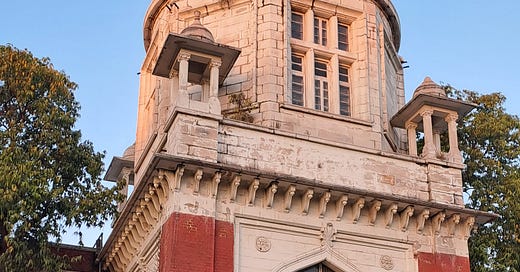



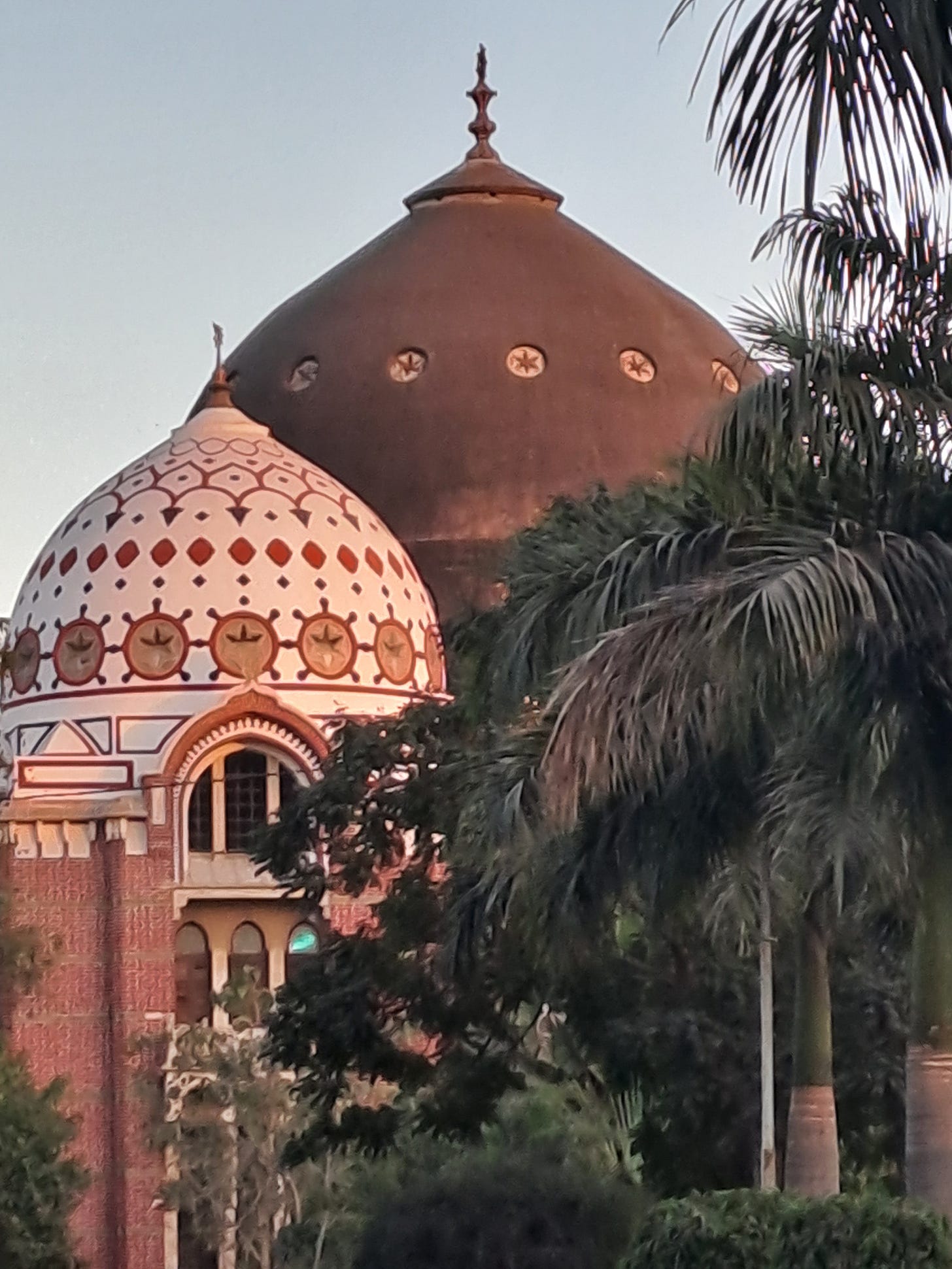
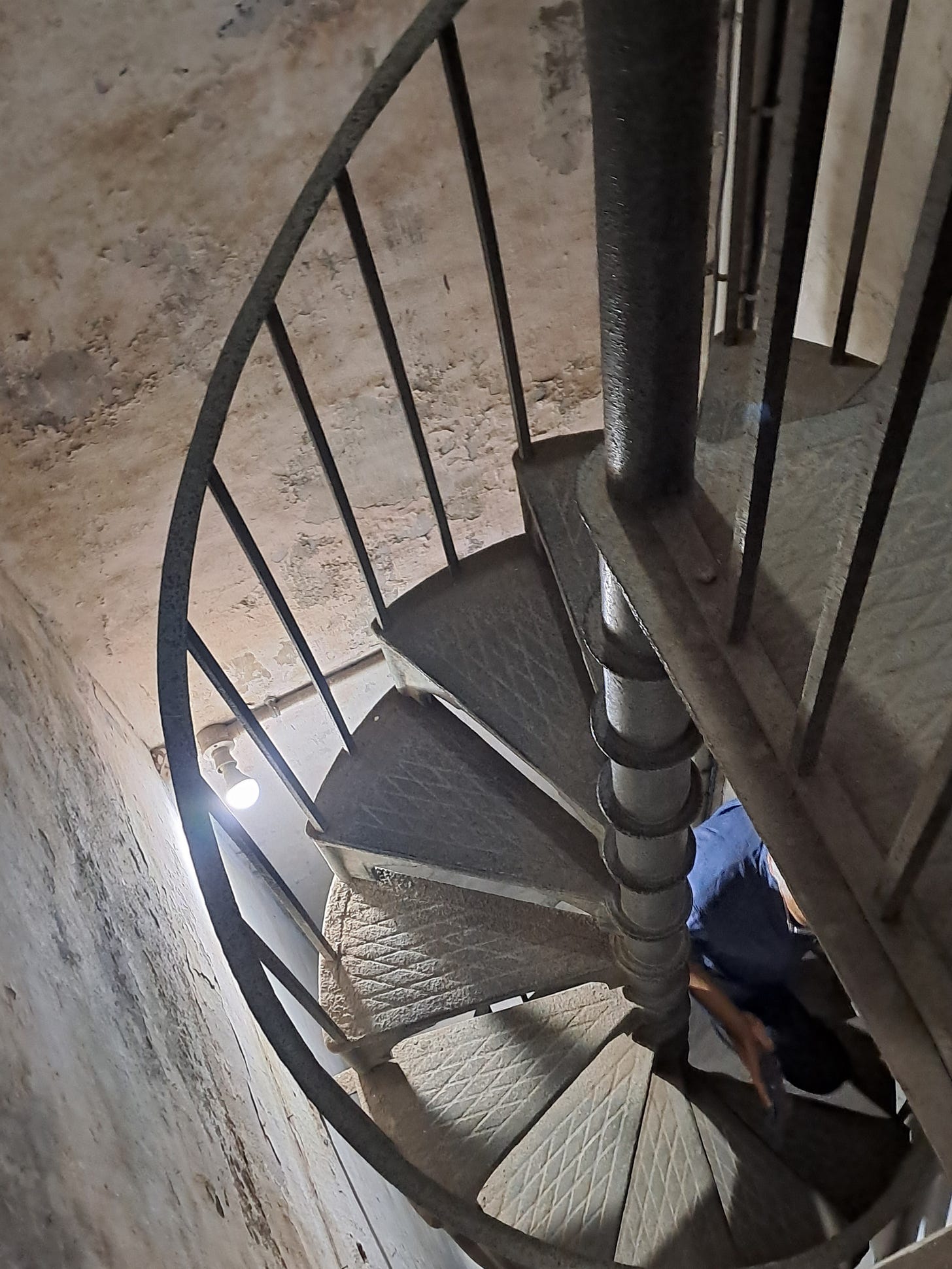
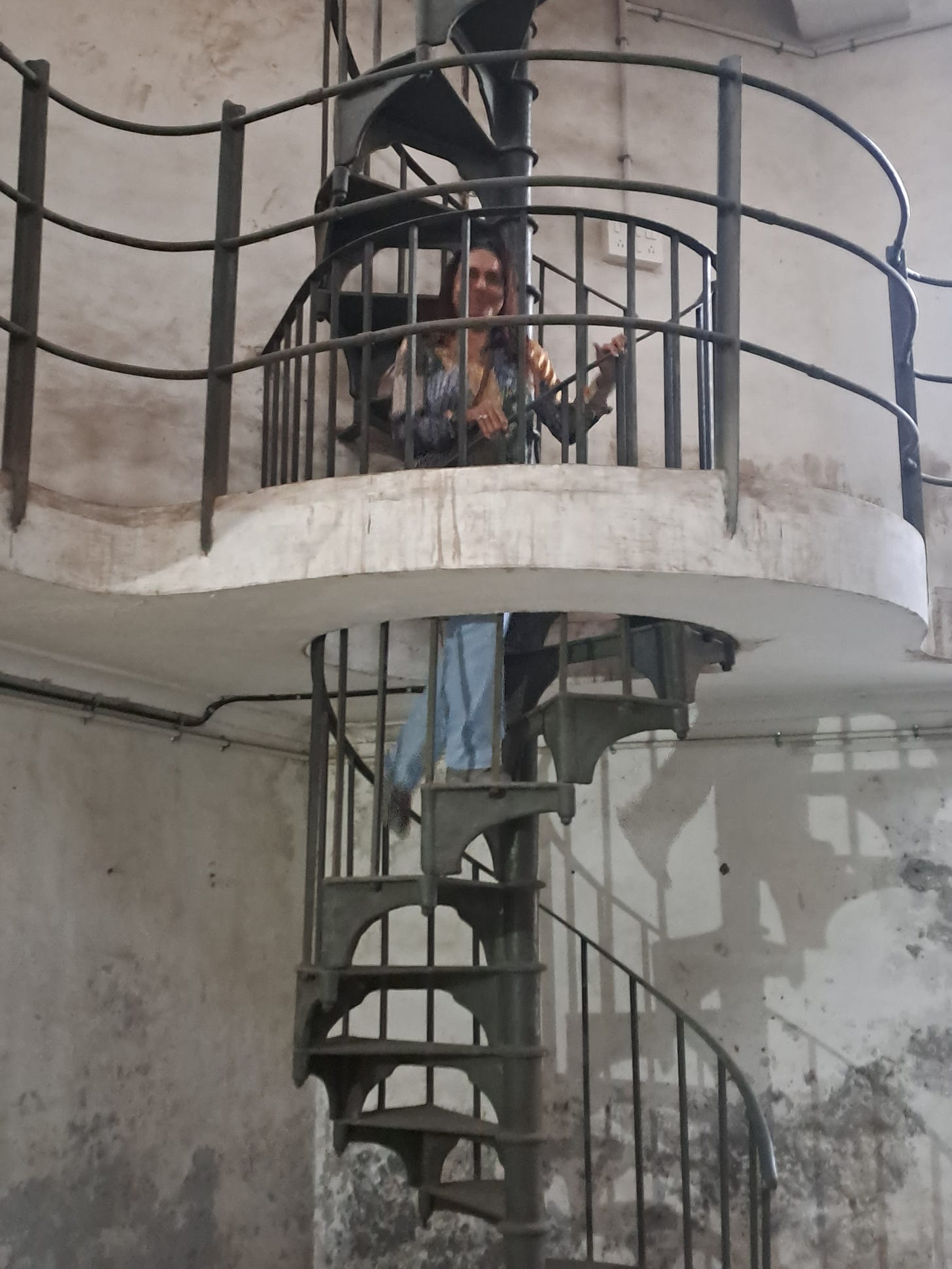
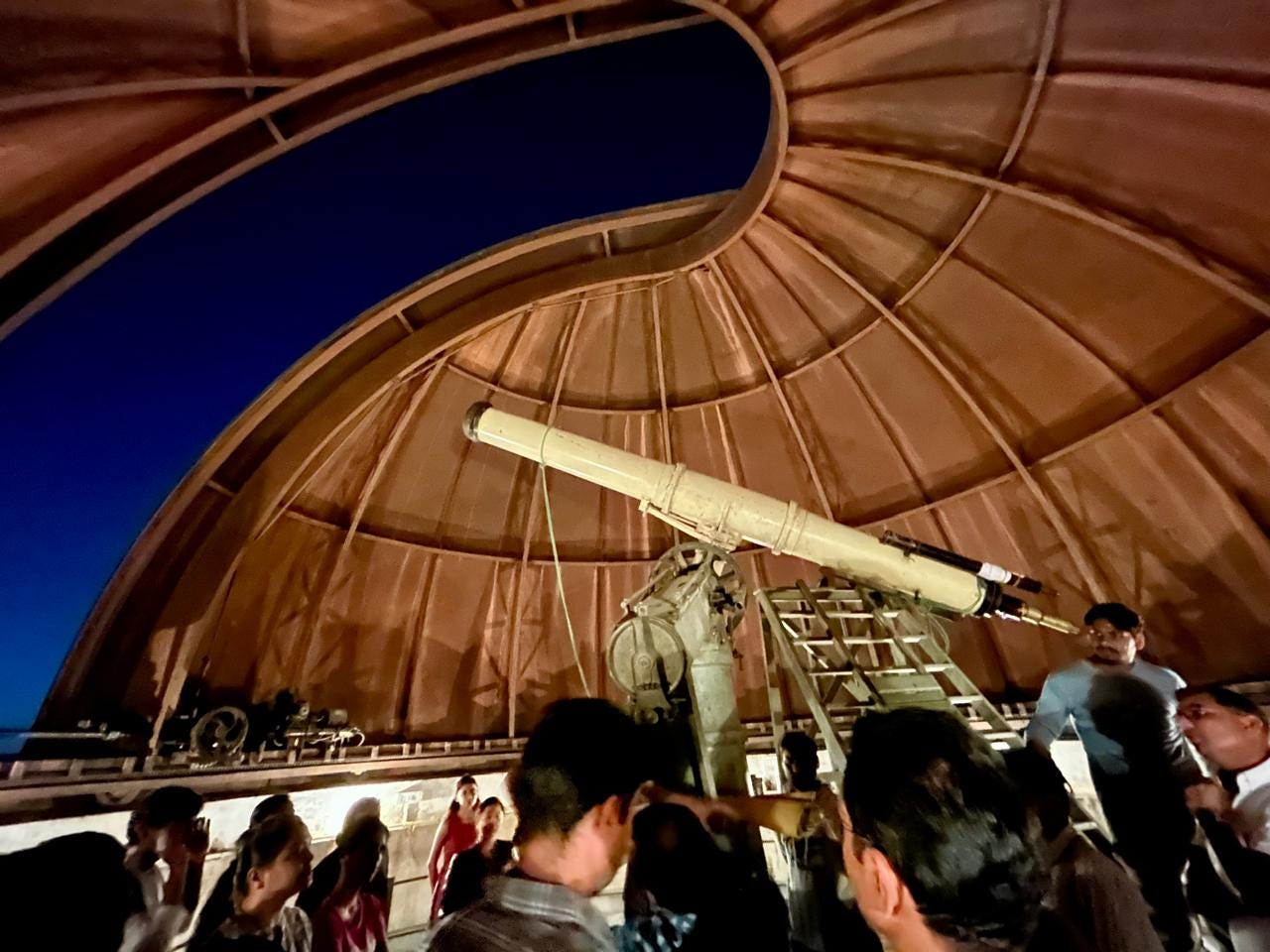
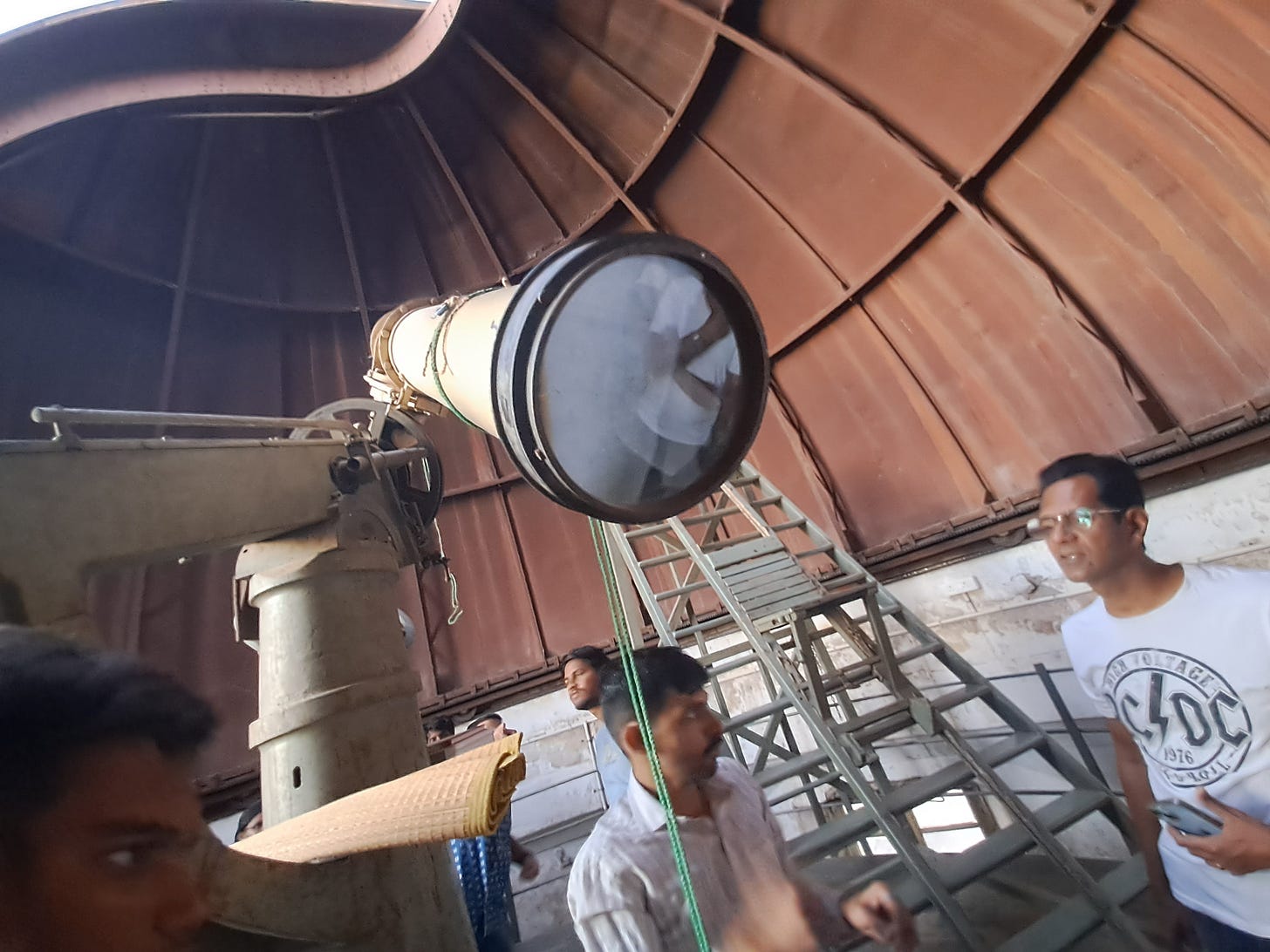
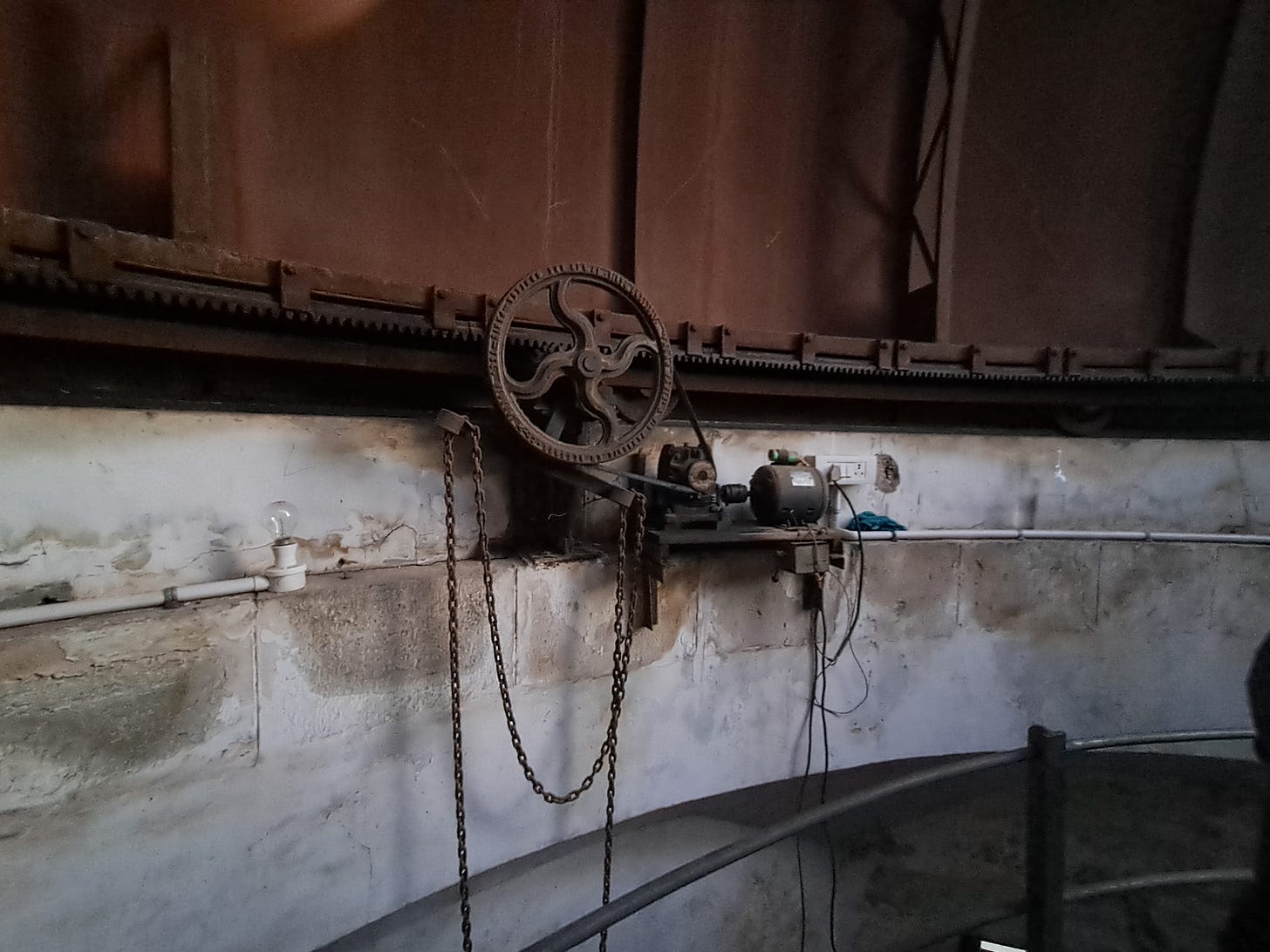
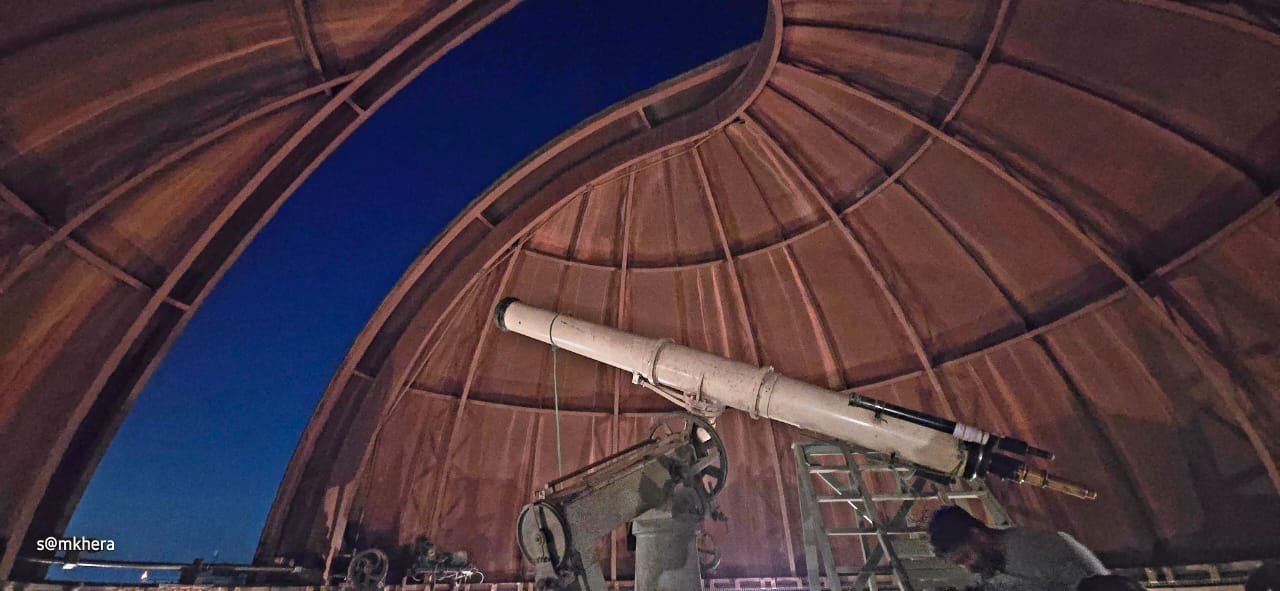
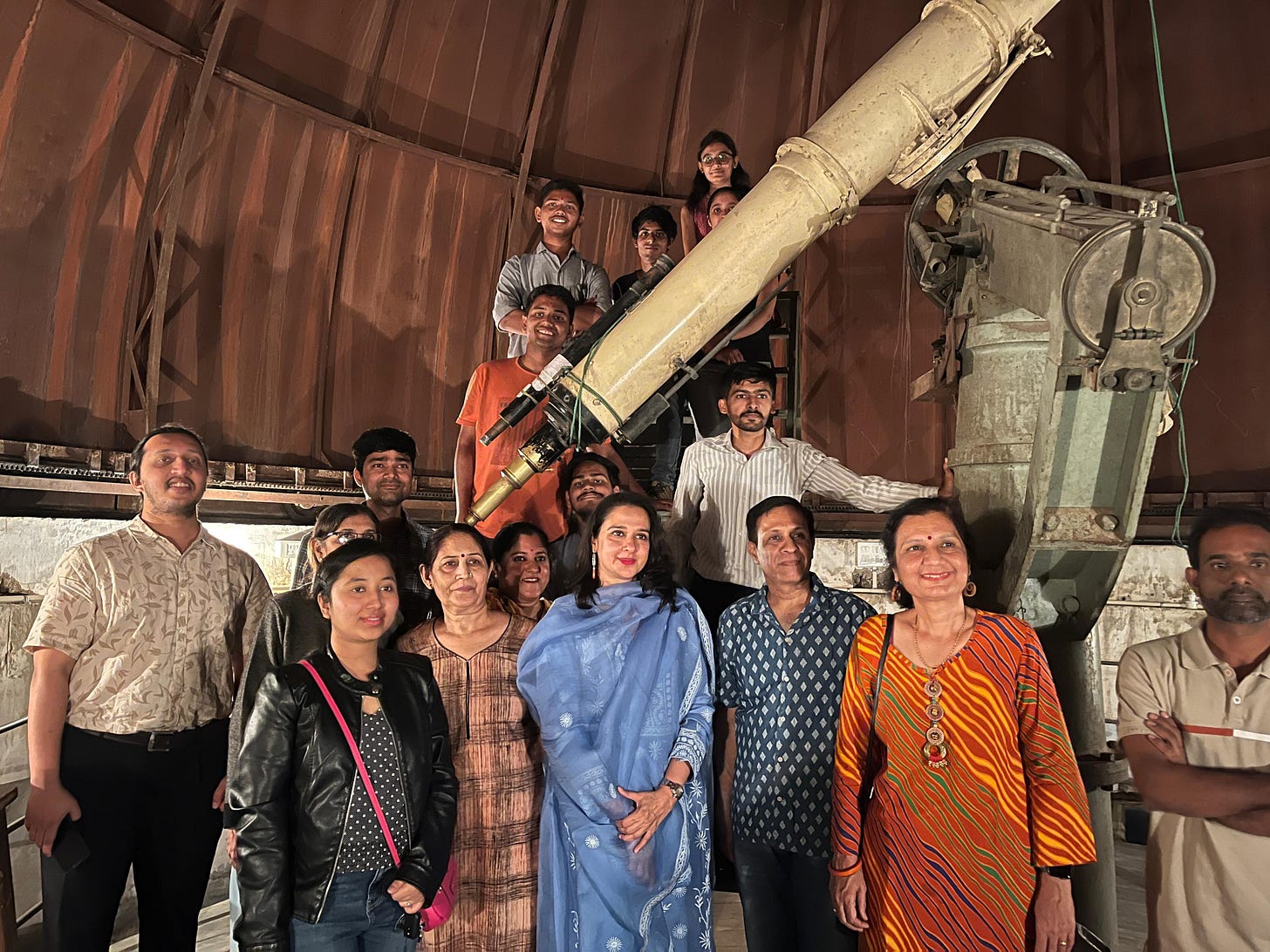
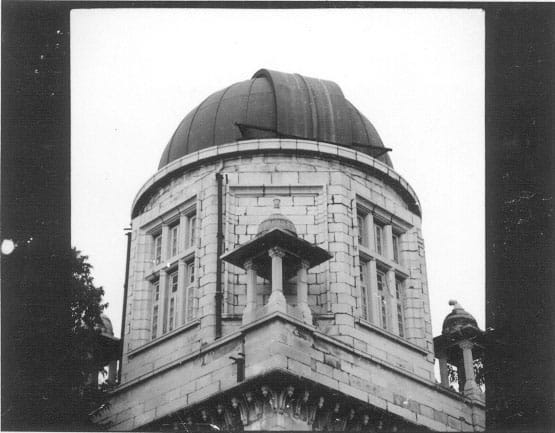
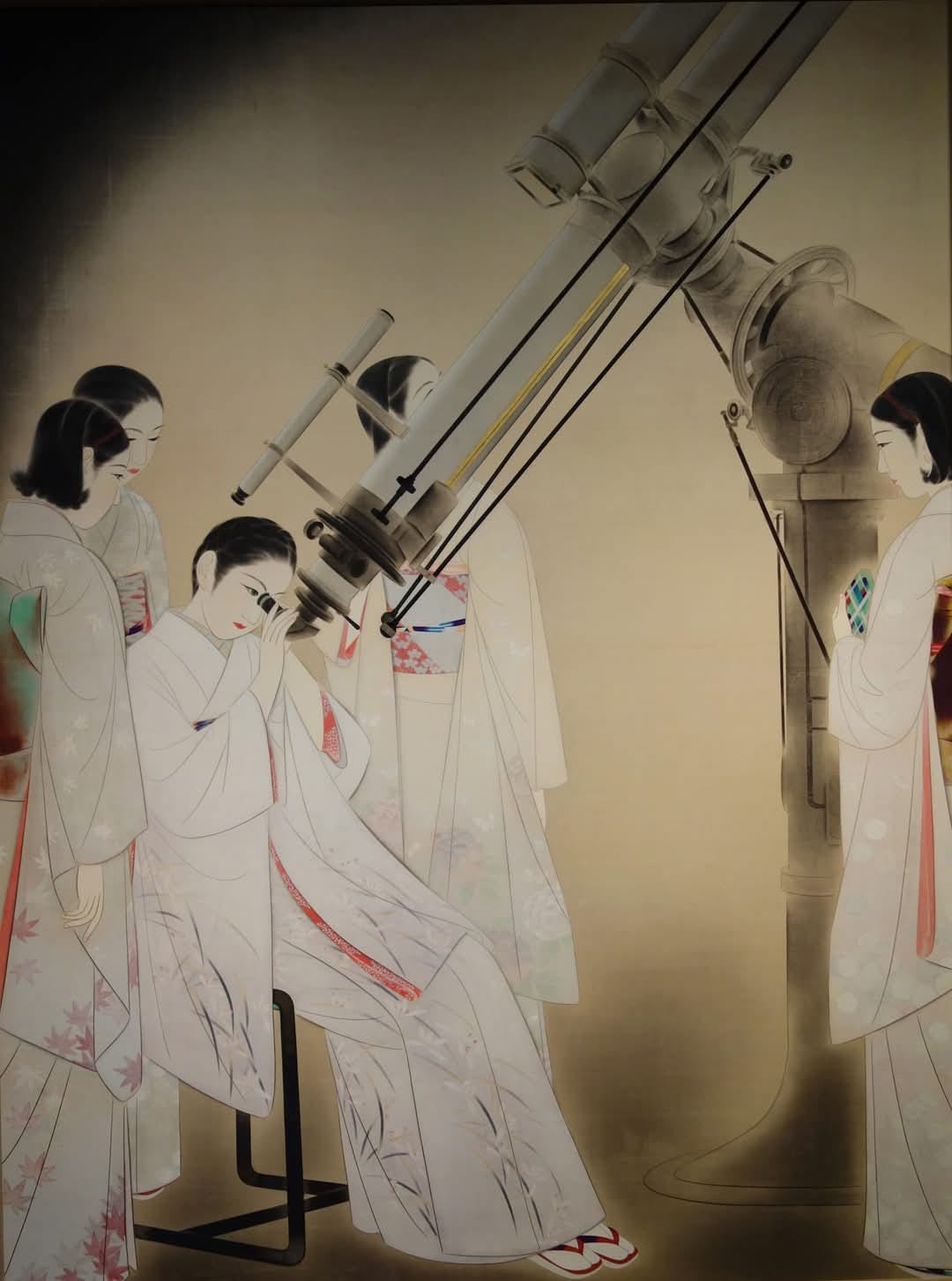
Love you, Kalpana! I hope the strength building gym classes have started ... I have to start them too!
Such a vivid and detailed description of the visit, that makes you feel you were there too. So lucky to catch all the celestial beauties in full splendour!